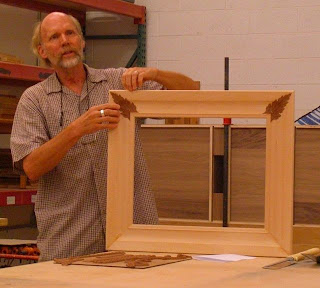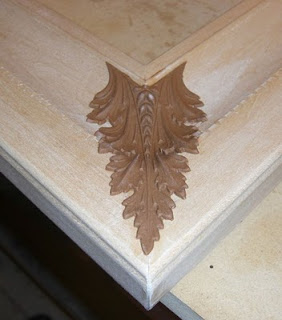Hi guys!
I just had to share this. I was routing a dado for the miter gauge track in my new table saw/router table work center project. Unfortunately, the pattern bit I was using lost the set screw that kept the collar which kept the bearing in the right position, and somehow the bit got under my template guide and after my first pass, I had a dado 1/8" wider than it was supposed to be! Ouch!
Now I'm thinking, OK, I've got nothing to guide the bit on the next pass, how am I going to get to the right depth, in the right place (which happened to need to be precisely 33 64ths of an inch). After much gnashing of teeth and pulling of hair, I realized that I actually owned the tools to make this possible. I grabbed my trusty sliding dovetail saw, and my trusty Veritas large router plane, and was all set to go.
I loosened the bolts holding the saw blade in the sliding dovetail saw, pulled out the blade till it was too deep, and set it down next to my miter gauge track and pushed it down until the flat next to the blade seated on the top of the track. Tightened the bolts, checked the depth again, and viola, 33 64ths in depth is set (without measuring!). Sawed both sides of the (#$%#%$) dado to depth, and proceeded to hand route (most) of the rest of the waste in the dado. When I got close, I checked the track, yep, not deep enough yet. Made a 1/4 turn on the depth adjustment screw, routed, checked again, repeat until fit is perfect. Done!
Now all I have to do is fill the blinkin gap. Rockler is sending me a replacement router bit, and pointed me to some filler called Wunderfill which seems to have gotten good reviews.
FYI, one of my magazines had a tip for filling holes with epoxy that I plan to try when the filler comes. The tip was to pour the 2 part epoxy into a ziploc bag, close, then mush the stuff around until mixed, smoosh it all into one corner of the bag and the snip a tiny bit off the corner. Squeeze gently to fill holes with epoxy. He got the idea after watching a cooking show on TV where the chef was using a squeeze bag (not sure what the proper name is) to squeeze decorative icing onto pastries.
Next project is to make the router table fence. The plan calls for a 4" tall by 6" deep fence. Not having tons of spare space to hang multiple fences, I've decided to alter the plan knowing that at some point I'll want a tall fence. I'm making it 13" tall with a mini-T track 2" from the top edge for feather boards. Can't think of a good reason why a tall fence won't work just fine for cuts that really don't need one. Let me know if you see a drawback to this plan.
FYI, I love Baltic birch. Never worked with it before because I thought it was too expensive, and am never going back to Lowes plywood. Boy was I wrong. Cheap plywood is too expensive! Rugby's got a new customer.
Cheers, and I'll see you at the next meeting!
Rich








